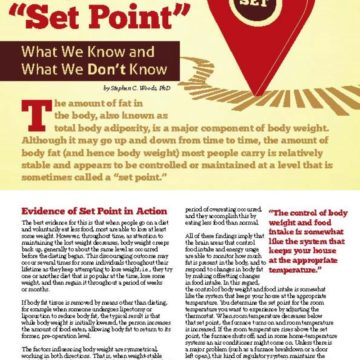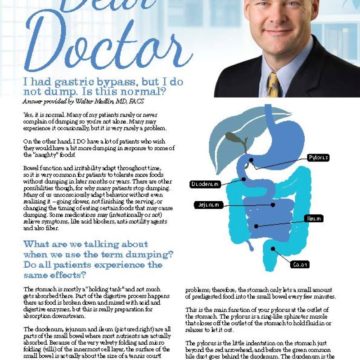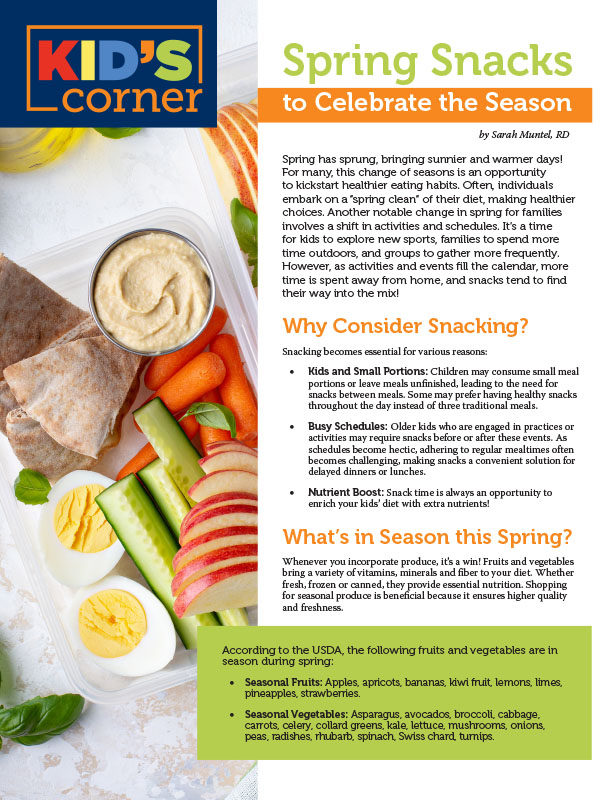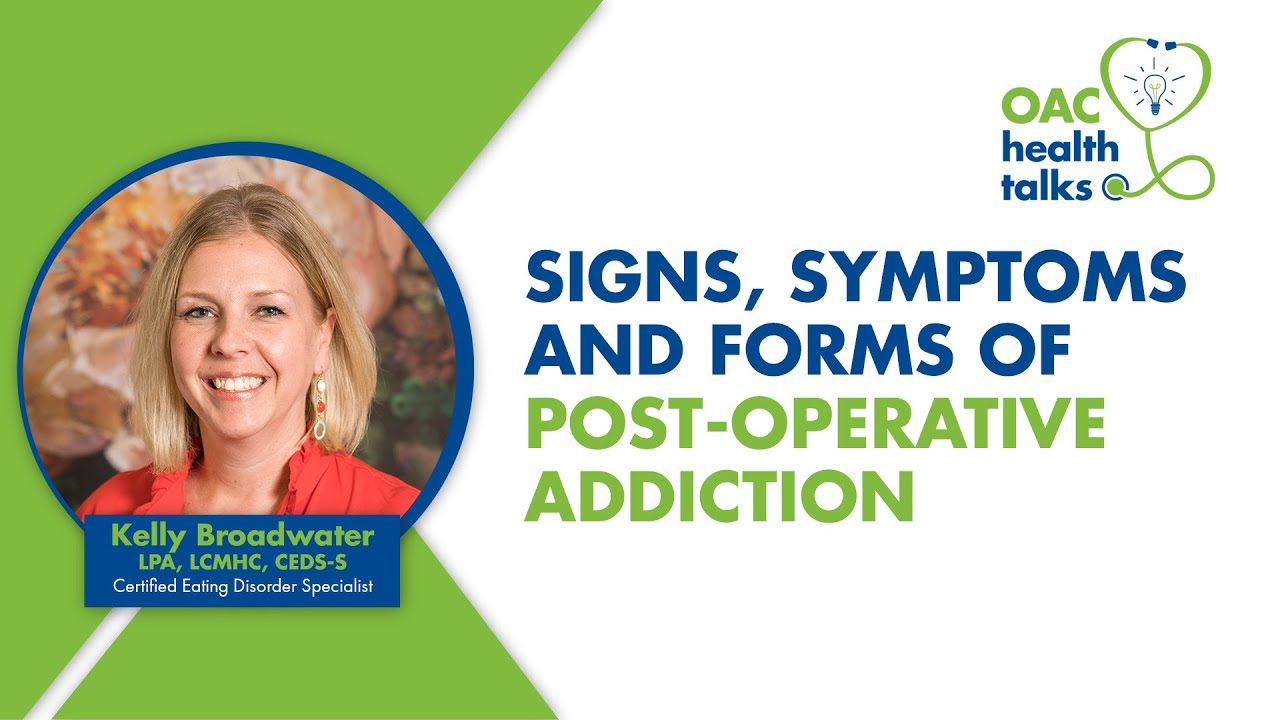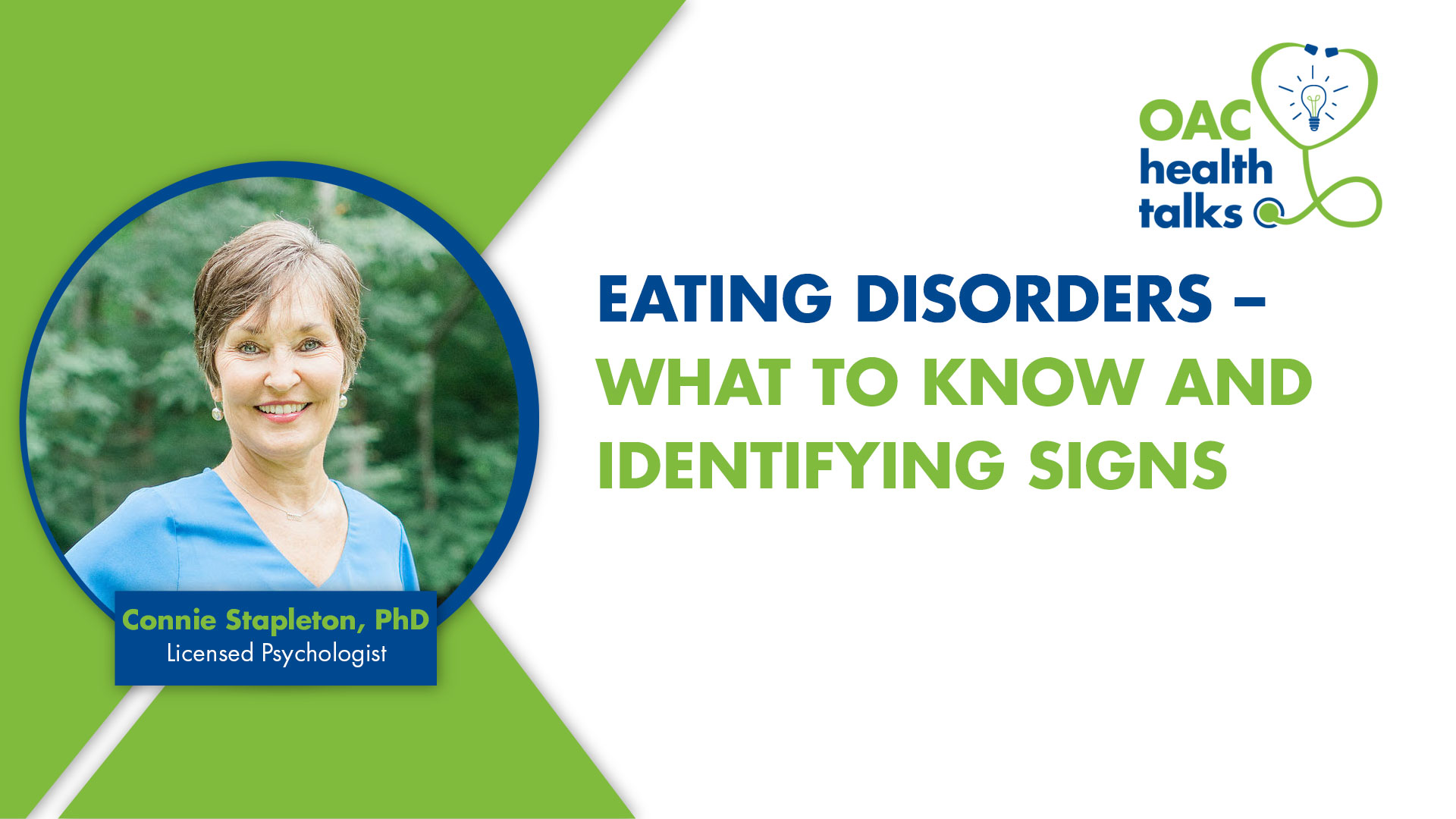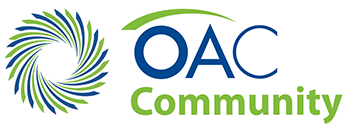Common Foods People Develop Addictions to (And Why)

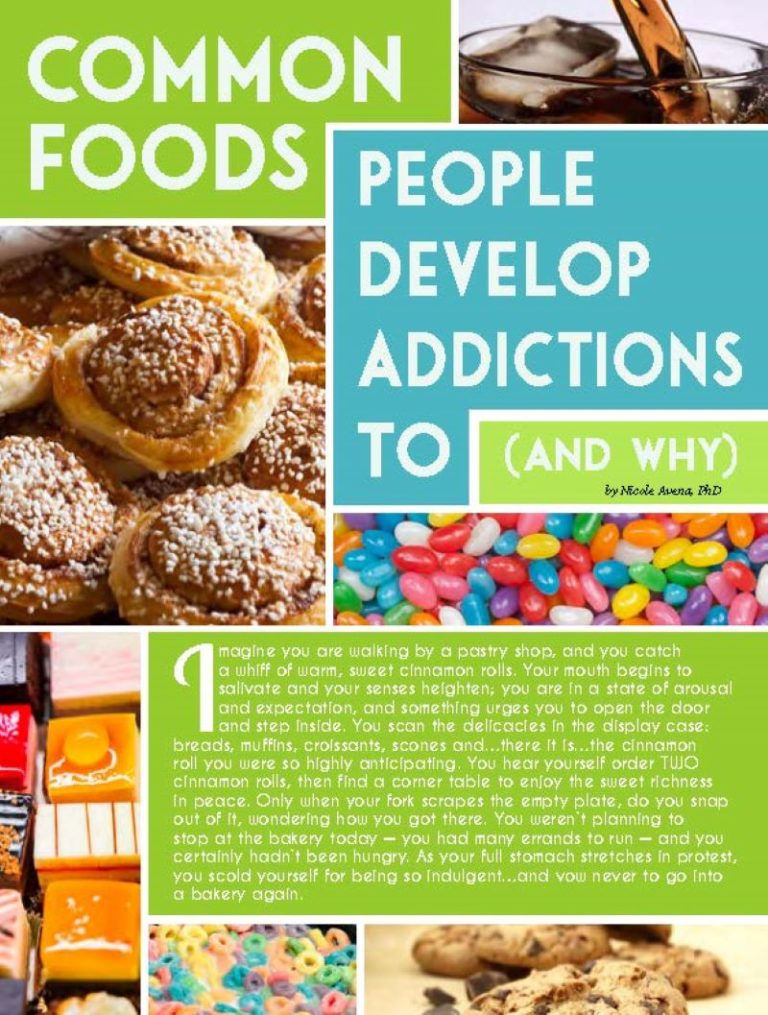
by Nicole Avena, PhD
Spring 2014
Imagine you are walking by a pastry shop, and you catch a whiff of warm, sweet cinnamon rolls. Your mouth begins to salivate and your senses heighten; you are in a state of arousal and expectation, and something urges you to open the door and step inside. You scan the delicacies in the display case: breads, muffins, croissants, scones and…there it is…the cinnamon roll you were so highly anticipating. You hear yourself order TWO cinnamon rolls, then find a corner table to enjoy the sweet richness in peace. Only when your fork scrapes the empty plate, do you snap out of it, wondering how you got there. You weren’t planning to stop at the bakery today — you had many errands to run — and you certainly hadn’t been hungry. As your full stomach stretches in protest, you scold yourself for being so indulgent…and vow never to go into a bakery again.
Does this scenario sound familiar? If so, you may be wondering what leads to these feelings of helplessness and powerlessness when it comes to controlling our food intake. Studies have shown that certain foods (dubbed highly palatable foods) can produce similar addictive behaviors and brain patterns in some people as drugs and alcohol. If this scenario was completely foreign to you, you’re not off the hook yet. Due to the prevalence of highly palatable foods in our society, it is possible to develop an addiction to them.
Highly-Palatable Food = Food that repeatedly triggers pleasure in the brain. Includes processed (high-salt), high-fat, high-sugar foods.
What is Food Addiction?
“I’m addicted to watching football!”
“I’m addicted to shopping!”
These (and other) pleasure-inducing past-times are sometimes referred to as “addictions” in the sense that they bring joy and excitement to our life, and are things we participate in repeatedly. However, there’s a difference between an activity being pleasurable versus addictive. This difference lies in the brain’s reaction to the activity.
This is Your Brain on Drugs…and Sugar
In simplified terms, different parts of our brains work together to sense stimuli, control our actions, and tell us when we need something. They communicate via messengers called neurotransmitters. Dopamine is a neurotransmitter that is released in response to pleasurable stimuli (having sex, eating certain foods, consuming drugs or alcohol). The pleasurable feelings that result from the release of dopamine also serve to reinforce the behavior. In other words, consuming drugs produces a “high” (dopamine release), which causes the user to seek more drugs to experience even more of the “high” (more dopamine release).
Addiction is commonly associated with substance abuse, but people can be addicted to sex, gambling, video games, and even sugar. From the brain’s perspective, the difference between drugs and sugar (or sex, gambling, and video games) is strikingly similar. Namely, for some people, eating sugar produces surges in dopamine release, giving them the compulsion to eat more and more sugar.
However, just because a person craves sugar does not mean they are addicted; it is when the person feels “out of control” with the substance that it is likely that their brain has been hijacked by the over-production of dopamine.
Doctors use the following measurement to determine whether a person has a drug addiction, and these criteria can be applied to food addictions as well:
Symptoms of Addiction: (Must meet three of the seven criteria in the last 12 months)
- Tolerance
- Addiction
- Using more, or using for a longer time, than intended
- Intention to, or failed attempts to, limit or quit
- Excessive time dedicated to getting, using, or recovering from use
- Social or work consequences due to use
- Use regardless of consequences
When a person becomes addicted to a substance (including food), they ingest large quantities of the substance in order to obtain the desired feeling of pleasure, or experience a high. This large consumption is referred to as a binge. With continued use, the brain and body become accustomed to the substance, so larger and larger quantities need to be consumed in order to receive the same “high.”
Are You at Risk for Food Addiction?
It may not be obvious to determine who has a food addiction because it does not just affect individuals with excess weight or obesity. People with disrupted eating patterns, such as binge eating disorder, may meet the criteria for a food addiction.
While genetics may play a role in whether a person has a propensity for developing a food addiction, the environment is likely more influential. Repeated exposure to, and use of, one’s particular drug of abuse promotes addiction. People who are repeatedly exposed to heroin or cocaine are likely to develop an addiction to those substances. Imagine how many more drug addicts there would be if drugs were advertised on billboards and TV – and if they were more socially acceptable.
Due to the constant, excessive exposure to high-sugar, high-carbohydrate foods (whose logos and advertising dominate pop culture), ALL people are at risk for developing a food addiction. Many of us experience significant food cravings for these, usually “convenient,” high-sugar, high-carbohydrate foods. As we build up a tolerance throughout time, it takes larger and larger amounts of those ice cream cones, candy bars and soft drinks to satisfy our cravings.
In addition to intense sugar cravings, some of us experience withdrawal symptoms in between sugar fixes, or when we try to quit consuming sugars for a period of time. Withdrawal symptoms include: headaches, sluggishness, irritability, shakiness, nervousness, or even having a cold sweat.
SUGAR CREEP
(The standard soda size has increased dramatically throughout the last 50 years…and
so have American’s waistlines.)
- (1955): McDonald’s Soda Size – 7 ounces
- (1980): McDonald’s Large Soda – 21 ounces
- 7 Eleven Big Gulp – 32 ounces
- (1990): McDonald’s Large Soda – 32 ounces
- 7 Eleven Super Big Gulp – 44 ounces
- (2006): 7 Eleven Team Gulp – Gallon jug for soda
Addictive Foods You Should Avoid
Experiments in animals and humans show that, for some people, the same reward and pleasure centers of the brain that are triggered by addictive drugs are also activated by highly palatable foods, or foods rich in sugar and fat.
Hidden Sugars
Many of us eat more sugar than we think we are consuming. Products that purport to be healthy with labels such as “low-fat” or “fat-free” replace the fat with added sugar. Other forms of sugar that you should be aware of in a label include:
- “Syrup”
- Corn syrup
- High-fructose corn syrup
- Maple syrup
- Agave syrup
- Foods ending in “ose”
- Fructose
- Glucose
- Sucrose
- Dextrose
Compare an unsweetened version of the product (such as plain, unsweetened yogurt) with the sweetened version (fruit-flavored yogurt) to estimate the amount of added sugars.
“Healthy” Sugars: brown rice syrup and agave may sound like healthy alternatives, but sugar is sugar, and the brain does not differentiate between the “healthy” ones and table sugar.
Carbohydrates
Carbohydrates act like sugar on the brain because, like sugar, they are broken down into glucose in the body. Excessive carb intake may lead to food addiction, so complex carbs should be replaced with fruits, vegetables, protein and healthy fats.
- Cereals
- Breads
- Pastas
- Rice
- Other complex carbohydrates
Sugary Beverages
Sugary beverages have become commonplace in recent years in the American diet. (See Sugar Creep box)
- Soft drinks
- Coffee
- Energy drinks
- Fruit drinks and juices
- Sports drinks
- Iced teas
Junk Foods
“Junk Food” is food that is processed, high in sugar, and usually high in fat and salt as well. Junk food is the epitome of “highly palatable food.”
- Cakes
- Cookies
- Candy bars
- Ice cream
- Foods found in vending machines
Read the ingredients. If a third grader couldn’t pronounce them, then you’re probably looking at “junk food.”
A Word of Caution
If this article has achieved its purpose, you have been moved upon to examine your food choices and eating patterns, and are beginning to identify areas that need improvement. However, before you vow to cut out ALL excess sugar, carbohydrates, fat and salt, please consider the fact that slow, consistent progress yields sustained changes, while quick-fix approaches invariably backfire.
Psychologically and behaviorally, it is easier to enact small changes throughout time than to try to change everything all at once. If you want to change your eating for the better and for good, select ONE thing to change, (such as reducing the number of sweets you eat per week by half; or eliminating processed foods), and sustain that change for two to four weeks, and then move on to another goal.
Sugar Content in Popular Foods (in grams):
- Bertoli Vineyard Marinara Sauce (1/2 cup) – 12 g
- Chobani Greek Yogurt, Nonfat, Raspberry (1 cup) – 19 g
- Coca-Cola (12 fl ounces) – 39 g
- Craisins (1/4 cup) – 29 g
- Frosted Cherry Pop-Tart (1 pastry) – 16 g
- Glaceau Vitamin Water Power-C, Dragonfruit (20 fl ounces) – 32 g
- Go-Gurt (1 tube) – 10 g
- Jell-O Fat-free 100-Calorie Pudding Snack, Chocolate Vanilla Swirl (110g) – 16 g
- POM Pomegranate Juice (8 fl oz) – 28 g
- Power Bar, Peanut Butter (1 bar) – 26 g
- Snapple Peach Iced Tea (16 fl oz) – 30 g
- Sweet Baby Ray’s Honey BBQ Sauce (2 Tablespoons) – 15 g
- V8 Fusion Vegetable Fruit, Peach Mango (8 fl oz) – 26 g
- Weight Watchers Mint Chocolate Chip Ice Cream Cup (1 cup) – 19 g
- Yoplait Yogurt, Strawberry (6 oz) – 26 g
This approach to learning (known in psychology as shaping), involves changing slowly so that the individual can thoroughly learn each step without becoming confused or overwhelmed. Slow, consistent progress will help you not only make changes, but be changed for life.
About the Author:
Nicole Avena, PhD, is a research neuroscientist/psychologist and expert in the fields of nutrition, diet and addiction. She has published over 60 scholarly journal articles, as well as several book chapters on topics related to food, addiction, obesity and eating disorders. Her book Why Diets Fail (Ten Speed/Crown), released in January, addresses the concept of sugar addiction. She also recently edited the book, Animal Models of Eating Disorders (Springer/Humana Press, 2013). Her research achievements have been honored by awards from several groups including the New York Academy of Sciences, the American Psychological Association, the National Institute on Drug Abuse, and her research has been funded by the National Institutes of Health (NIH) and National Eating Disorders Association. You can learn more about her research at her website (www.DrNicoleAvena.com), or follow her on Facebook and Twitter. *Appreciation is extended to Emily Sullivan for her assistance with developing this article.
by Sarah Muntel, RD Spring 2024 Spring has sprung, bringing sunnier and warmer days! For many, this…
Read ArticlePost-operative addiction is often overly simplified as transfer addiction or cross-addiction, assuming individuals “trade” compulsive eating for…
View VideoEating disorders can be a concern or question for many who are along the journey to improved…
View Video




